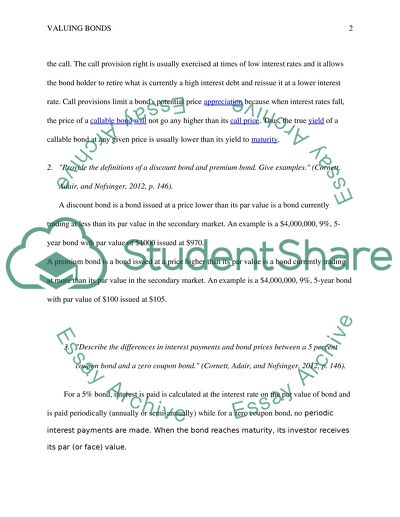Valuing Bonds Essay Example | Topics and Well Written Essays - 250 words. Retrieved from https://studentshare.org/finance-accounting/1610770-valuing-bonds
Valuing Bonds Essay Example | Topics and Well Written Essays - 250 Words. https://studentshare.org/finance-accounting/1610770-valuing-bonds.


